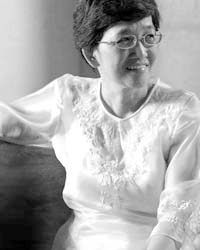The past six months have not been auspicious for the Philippines. In 2019, Mindanao, especially Regions XI and XII, suffered earthquakes one after another (July 19, Oct. 16, 29, 31 and Dec. 15). Many have not yet recovered from the devastation. This disaster was closely followed by two typhoons: Typhoon Tisoy on Dec. 2 and Typhoon Ursula on Dec. 25.
Again, before our Filipino brothers could recover from Tisoy and Ursula, Taal erupted on Jan. 12, venting its anger on a wide swathe of communities in Batangas. Until now, those who lived on the volcano island remain in evacuation centers and it seems that they will have no place to go back to.
And just as Taal Volcano was simmering down, the N-CoV, a new strain of coronaviruses, appeared in China and spread swiftly to other parts of the world where the Chinese traveled. On Jan. 30, the Department of Health confirmed the Philippines’ first N-CoV case, a 38-year-old woman who arrived in the Philippines from Wuhan, China, via Hong Kong on Jan. 21. The Philippines is still monitoring 31 PUI or patients under investigation, and confirmation from Australia on samples it had sent. The public, meanwhile, has been warned to observe infectious disease protocol by frequent hand washing, avoiding crowds, proper coughing and sneezing etiquette.

Only in China
Yes, the N-CoV has generated a lot of problems and grave concerns all over the world. But China is doing a heroic job trying to contain it. In two days, China succeeded in sequencing the genome and discovered it is a new strain of coronavirus.
China was able to mobilize more than 1,000 military medical corps members to help Wuhan Hospital in coping with the crisis. Many other doctors volunteered to help and augment the already overworked medical personnel who were near exhaustion. Initially, 40 medical officers from the city’s military hospital had started work in the intensive care unit of Wuhan Pulmonary Hospital.
The latest news from China is that it has opened a 1,000-bed coronavirus hospital after workers spent 48 hours converting an empty building. More than 500 construction workers, electricians and police worked around the clock to open the hospital in the Huangzhou District, close to Wuhan, where the outbreak of N-CoV began.
An even more ambitious building project is underway in Wuhan itself. Four more hospitals are being built very quickly, using prefabricated buildings and modeled on a medical center built in Beijing in 2003 in seven days to tackle SARS.
Ugly racism
Dr. Jeanne Smith of the Toronto Public Health Office laments that the “outbreak of idiocy is spreading 10,000 times faster than coronavirus.” The official refers to the xenophobic conspiracy theories and tales of false cures that continue to spread across social media. “Becoming a complete moron during an infectious disease outbreak is far more viral than we first thought. Fact resistance is abnormally high, especially among the dullard population,” she said.
In the Philippines, misinformation and false news have caused a lot of panic. Even mainstream news media are guilty of airing footages of blatantly false news, like sick N-CoV patients just dropping dead. “The only illness that can cause someone to fall dead is heart attack,” doctors said.
False news also mislead people, like the footage supposedly on two ways of wearing a mask, blue side out or in depending on usage. Experts say there is only one way of wearing a surgical mask, the blue side, which has water repellant, should always be out.
False news only serves to add and magnify already existing problems.
The Tsinoy community is not exempt from such a tendency. The fear of the spread of N-CoV has created a deadlier virus – racism, stereotyping and anti-Sinoism. There were many anti-Chinese posts on social media.
This includes even Tsinoys posting negative reactions about new immigrants. Kaisa pointed to a Tsinoy, who posted comments against the irritating manners or misbehaviors of xinqiao (newcomers from China) like talking loud, spitting anywhere, gambling, that he is guilty of generalizing and stereotyping.
The post was immediately deleted but unfortunately, it has been reposted many times.
This is the caution that Kaisa Para Sa Kaunlaran’s past president, Meah Ang See, posted on social media:
Ranting against the xinqiao or new immigrants and stereotyping them at this point, don’t help. It goes back to perpetrating and perpetuating the “us vs. them” mentality.
We cannot distinguish the Tsinoy from the xinqiao by belittling them and lumping them all together. We become as guilty of being racist.
It is human nature to be judgmental. But given our Tsinoy history of being at the receiving end of discrimination, we should be the first ones to denounce discriminatory acts and words.
Bottom line, if we do not like the xinqiao pissing or spitting anywhere, we also should not tolerate the practice of people just urinating anywhere, as evidenced by the ‘Bawal Umihi’ signs everywhere.
Bad behavior is bad behavior. We should not tolerate it, but we should not single out the offenders’ race or what country they come from.
Calling the xinqiao TDK is discriminatory. It’s exactly the same condition as Tsinoys being called intsik. Intsik is now rarely said with malice. But we need to reflect. When we use TDK, even amongst ourselves, there is always that feeling of derision and attitude of condescension.
We shouldn’t visit the discrimination we or our fathers suffered from on the newcomers or on anyone for that matter.
